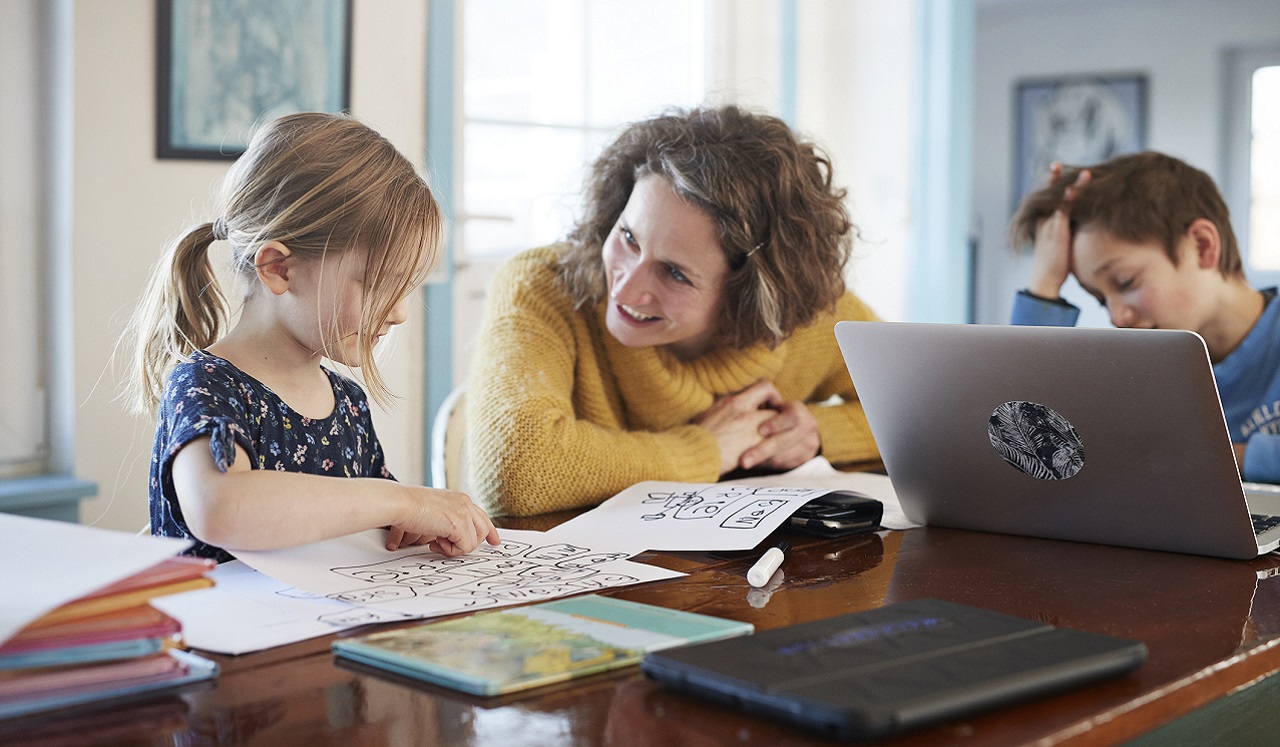May 26, 2020
Anxiety, fear, sadness, loneliness, disappointment, depression. Your children may be dealing with such feelings in the COVID-19 crisis.
“Their world has changed, and they don’t know when it will return to normal,” says Marqin Cook, MA, ATR-P, art therapist in Child Life and Expressive Therapies at Children's Memorial Hermann Hospital.
So how can you help your kids cope with their emotions—and know when outside help might be needed?
Celebrate milestones.
We encourage parents to have open dialogue with children about how dreams are not cancelled but may look different. Explore creative options with the resources you do have.
While holding an in person party is not a current option, cooking your child’s favorite meal, buying or making cake and party favors for your family can be!
Friends and relatives can send video clips singing “Happy Birthday” or sharing birthday wishes. A car parade could be organized, where friends’ families dress up in the theme the child chooses, such as superheroes, and then ride by, pausing to chat with the birthday honoree.
Understand they may be acting out due to stress.
“Be mindful of that in deciding how you approach them,” Cook says. “They may not be rebellious purposefully.” Acknowledge they might be having a hard time and check in and ask what they’re feeling.
Be aware how you express your own emotions.
“Be mindful of how often you talk about COVID-19 and your choice of words,” Cook says. “Children feed off your emotions. So be honest and calm and talk about the virus at their developmental level.”
Offer routines and structure.
“Having the structure of their life shaken can be overwhelming, so create a new routine,” Cook says. “You cannot control the world, but you can give children a sense of control by allowing them to make choices, even little ones.”
Kids can choose the order they do their chores or school work. Alternatively, everyone can write down their choice for at-home activities or take-out restaurants on popsicle sticks or on pieces of paper in a bowl. The one randomly drawn decides what the family does.
Provide a safe space to talk about emotions.
“Validate their feelings of frustration, anxiety and loss by using phrases that encourage them to share,” Cook says.
Rather than saying “It will be OK,” “It’s not a big deal” or “This will soon be over,” acknowledge that times are difficult and scary. Explore how to help them cope and how to safely express their emotions.
Reassure younger ones that many adults are working hard to protect them and their loved ones. Empower children in how they can contribute to other’s safety by social distancing and frequent handwashing.
Emotions also can be expressed through art-making. Kids can draw a heart and decorate it with feelings or emotions that they are experiencing.
When anyone in your family feels down or overwhelmed they can write their feelings on scraps of paper, then choose to share the feelings out loud, tear them up or keep them private by placing their written thoughts in a jar or journal. If they choose to tear them up, they can take it a step further to make something new out of it, such as a collage.
Another option is giving each child a box in which they can place their written emotions, then remove one by one when/if they feel ready to talk with you about them.
Practice relaxation.
“Blowing on a pinwheel can help children focus on their breathing as you encourage them to take slow, deep breaths,” Cook says.
Children can also paint to music, changing brush strokes and colors with the beat or draw using colors that they find calming.
“Play some music and get the wiggles out,” she says.
Experience laughter together and talk about how being physically active can help relieve some tension and emotion.
Keep connected socially.
Brainstorm how they can stay connected with others at a distance. Have movie nights when you and other families press play at an appointed hour. Virtually share a meal, read a book or play a board game together.
Limit exposure to news.
The pandemic has created an infodemic, so it could be helpful to limit your kids’ time on social media or watching the news. Parents can model behaviors by setting boundaries around their own media consumption, such as listening to news briefly and then switching to playing a game.
This is a good time to have a conversation as a family about which news sources you follow and how to judge whether information is accurate.
Be attentive to changes in behavior.
If changes are observed in your child’s behaviors, they may be indicators of your child’s mental health status and level of coping. Reach out to your child’s care provider if they display behaviors such as withdrawing from family and friends, hopelessness or helplessness, increased negative self-talk, extreme academic changes, increased stomach aches or headaches, or a decrease in appetite or changes in sleeping patterns.
Seek immediate medical attention if your child displays behaviors such as substance abuse, self-harm, drastic personality changes or aggression. Immediate medical attention should also be sought if your child researches or talks of wanting to die or kill themselves—even jokingly.
The National Suicide Prevention Lifeline is there to help: (800) 273-8255, as is the Crisis Text Line by texting HOME to 741741.
You can download an activity workbook to help your kids communicate at: http://teacher.scholastic.com/education/pdfs/FirstAidForFeelings_Eng.pdf.


